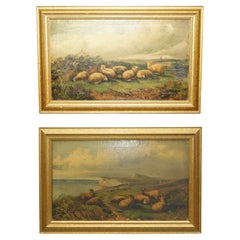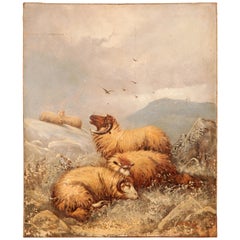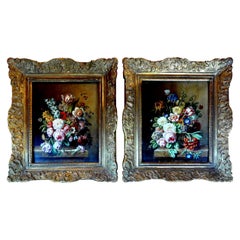John Morris Furniture
John Morris was born in Laguna Beach, California, in 1920, his love of painting manifested itself at the age of 15 when he painted portraits of people at local fairs. Even then, he wished to capture the essence of the subject rather than the outward appearance, a principle he followed throughout his career. Morris painted and studied constantly until he joined the Armed Services during World War II, and became an official combat artist in the South Pacific. His work was included in the exhibition at the National Gallery of Art in Washington, D.C., during World War II. It was a special honor for the artist. Morris went on to paint in Italy and England as well as in the USA, but his greatest love was France, which he visited yearly. He was so taken by the French art that he suggested that artists should go there to become exposed to the sense of livingness, and as he put it, "the voluptuous spirit of the soul," which exists in France. Morris had once said, "I have tried all the schools, and with the Impressionists, I get what I want to see in color without being too overly explicit. In each canvas, you can bring out something that is communication with some spiritual and virtual response from something that you are looking at as you paint and as you work you can try to paint what you see with your eyes. If you reach that communication with the painting it should be that that is Impressionism." For him, beauty could be seen in playing with children. There were nuns in his family, and he was impressed with the beauty of ritual, yet he captured the human qualities as well. In 1958, Morris established an art center in Palm Springs, California, where he taught students, many of whom are celebrities of the film industry. He also had studios in Honolulu, Paris, Rome and London. However, in 1967 he gave up teaching to devote his energies and talent full time to painting. These paintings reveal the beauty of life. They are splashed with light and color. Morris captured on the contemporary scene, the qualities expressed by artists such as Monet, Pissarro and those artists who developed the principle of Impressionism. Morris died in 1991. His paintings are included in the collections of the Museum of Modern Art, Rio de Janeiro and São Paulo Museum of Art, the Honolulu Museum of Art, the Santa Barbara Museum of Artin addition to other museums. Morris’ works have also been featured at the Festival of Two Worlds by President Kubleck of Brazil, and the Kennedy Library in Boston. His works have been collected by Mrs. Aristotle Onassis, Frederick Loewe, Bing Crosby.
19th Century American Other Antique John Morris Furniture
Canvas, Paint
19th Century English Victorian Antique John Morris Furniture
Canvas
Late 19th Century British Antique John Morris Furniture
Canvas, Paint
Early 20th Century French Romantic John Morris Furniture
Wood
20th Century Irish Victorian John Morris Furniture
Canvas, Giltwood
Mid-20th Century French Arts and Crafts John Morris Furniture
Canvas
20th Century Haitian John Morris Furniture
Canvas
20th Century Spanish John Morris Furniture
Paint, Canvas
19th Century American Country Antique John Morris Furniture
Wood
20th Century Caribbean Folk Art John Morris Furniture
Paint
Early 20th Century German Biedermeier John Morris Furniture
Canvas, Wood
1960s Danish Other Vintage John Morris Furniture
Canvas
Early 20th Century French John Morris Furniture
Wood, Paint
Late 19th Century English Victorian Antique John Morris Furniture
Paint, Canvas, Giltwood
19th Century Irish Romantic Antique John Morris Furniture
Canvas, Paint




